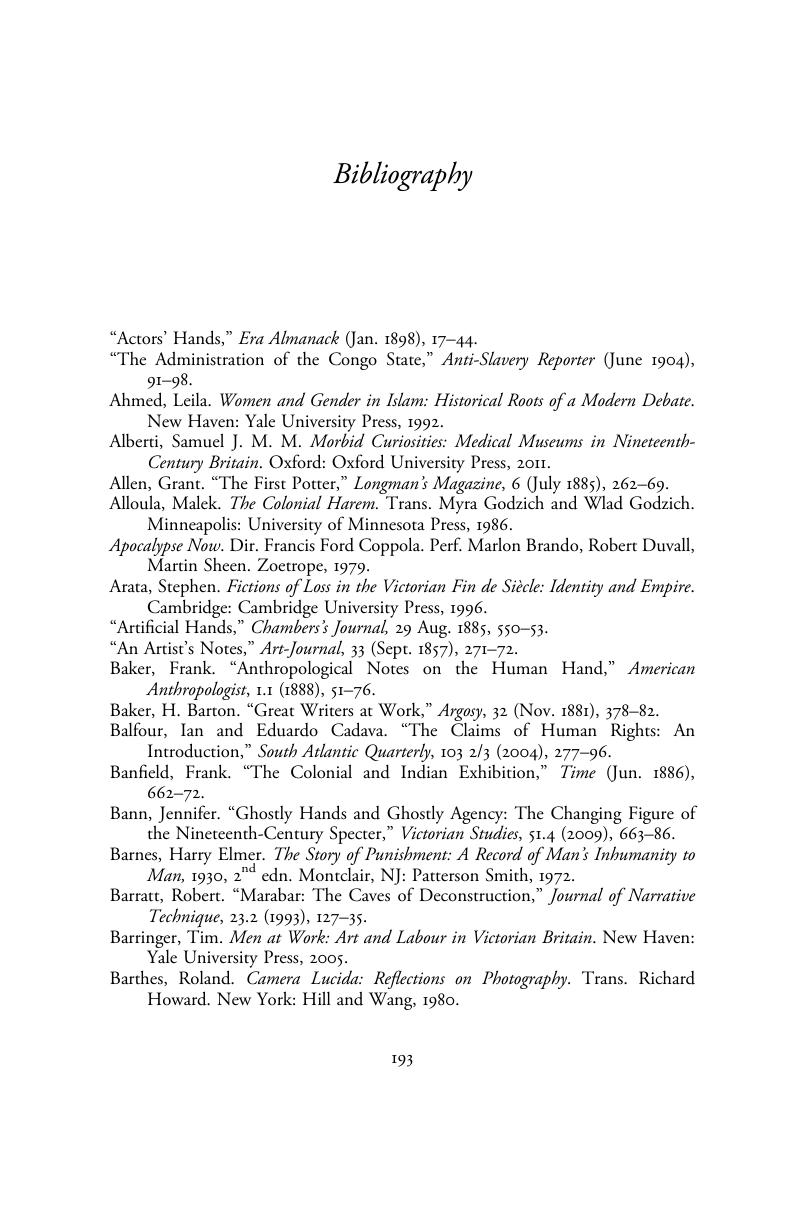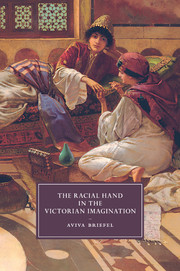Book contents
- The Racial Hand in the Victorian Imagination
- Cambridge Studies in Nineteenth-Century literature and Culture
- The Racial Hand in the Victorian Imagination
- Copyright page
- Dedication
- Contents
- Illustrations
- Acknowledgments
- Introduction
- Chapter 1 The case of the blank hand: race and manual legibility
- Chapter 2 Potters and prosthetics: putting Indian hands to work
- Chapter 3 The mummy’s hand: art and evolution
- Chapter 4 A hand for a hand: punishment, responsibility, and imperial desire
- Chapter 5 Crimes of the hand: manual violence and the Congo
- Coda
- Notes
- Bibliography
- Index
- Cambridge Studies in Nineteenth-Century Literature and Culture
- References
Bibliography
Published online by Cambridge University Press: 05 October 2015
- The Racial Hand in the Victorian Imagination
- Cambridge Studies in Nineteenth-Century literature and Culture
- The Racial Hand in the Victorian Imagination
- Copyright page
- Dedication
- Contents
- Illustrations
- Acknowledgments
- Introduction
- Chapter 1 The case of the blank hand: race and manual legibility
- Chapter 2 Potters and prosthetics: putting Indian hands to work
- Chapter 3 The mummy’s hand: art and evolution
- Chapter 4 A hand for a hand: punishment, responsibility, and imperial desire
- Chapter 5 Crimes of the hand: manual violence and the Congo
- Coda
- Notes
- Bibliography
- Index
- Cambridge Studies in Nineteenth-Century Literature and Culture
- References
Summary

- Type
- Chapter
- Information
- The Racial Hand in the Victorian Imagination , pp. 193 - 213Publisher: Cambridge University PressPrint publication year: 2015



